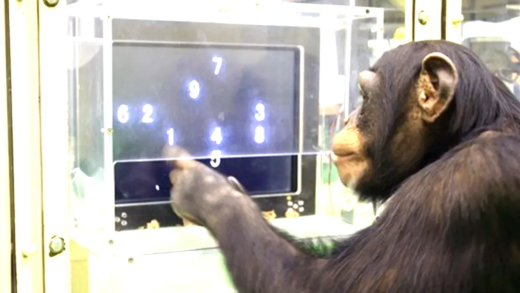Managing diabetes in cats is essential for their health and well-being. Symptoms include increased thirst, frequent urination, and weight loss. Diagnosing diabetes involves blood tests and urine tests. Causes include obesity and genetics. Dietary changes are crucial, with a focus on low carbohydrates and high protein. Administering insulin and monitoring blood sugar levels are vital for management. Complications can arise if not managed properly. Regular vet check-ups are necessary for ongoing care. While diabetes may not be reversible, many cats can live healthy lives with proper management.
What is Diabetes in Cats?
Diabetes in cats is a serious condition where the cat’s body cannot produce enough insulin or cannot use it effectively. Insulin is vital for converting glucose into energy. When this process is disrupted, glucose levels rise in the blood, leading to hyperglycemia. This condition can cause various health problems if not managed properly.
Understanding diabetes in cats involves recognizing that it can be either Type 1, where the body fails to produce insulin, or Type 2, where insulin is present but not utilized effectively. Factors such as obesity, inactivity, and genetics can contribute to the onset of diabetes.
Managing diabetes involves regular monitoring and lifestyle adjustments. With proper care, many cats can live healthy lives despite their diagnosis.
Symptoms of Diabetes in Cats
Recognizing the symptoms of diabetes in cats is crucial for early diagnosis and treatment. Common signs include:
- Increased thirst: Cats may drink more water than usual.
- Frequent urination: You might notice that your cat is urinating more often.
- Weight loss: Despite eating normally or more, diabetic cats often lose weight.
- Increased appetite: A cat may seem hungrier than usual.
- Lethargy: A noticeable decrease in energy levels can occur.
If you notice these symptoms, consult a veterinarian promptly. Early detection can help manage the condition effectively.
Diagnosing Diabetes in Cats
Diagnosing diabetes in cats typically involves a combination of physical examinations and laboratory tests. Veterinarians look for the symptoms mentioned above and may perform the following tests:
- Blood tests: High glucose levels in the blood can indicate diabetes.
- Urine tests: The presence of glucose in the urine is a common sign of diabetes.
- Fructosamine levels: This test helps determine blood sugar levels over a period of time.
Once diagnosed, a veterinarian will work with you to develop a management plan tailored to your cat’s needs.
Causes of Diabetes in Cats
Diabetes in cats can stem from various causes that disrupt the normal insulin function. Understanding these causes helps in prevention and management. Here are some common factors:
- Obesity: Overweight cats are at a higher risk due to increased fat affecting insulin sensitivity.
- Genetics: Certain breeds, like Burmese and Siamese, have a higher predisposition to diabetes.
- Age: Older cats are more likely to develop diabetes, especially if they are overweight.
- Hormonal disorders: Conditions like Cushing’s disease can lead to diabetes by affecting insulin production.
- Diet: High-carbohydrate diets can contribute to obesity and insulin resistance.
Recognizing these causes can help you make informed choices to minimize your cat’s risk of developing diabetes. Maintaining a healthy weight and regular veterinary check-ups are crucial.
Dietary Changes for Diabetic Cats
Dietary changes are essential for managing diabetes in cats. A proper diet helps regulate blood sugar levels and maintain a healthy weight. Here are some key adjustments:
- Low-carbohydrate diet: Reducing carbohydrates can help stabilize blood sugar levels.
- High-protein foods: Protein-rich diets can aid in maintaining muscle mass while promoting weight loss.
- Consistent feeding schedule: Regular meal times help regulate insulin levels.
- Controlled portion sizes: Measure food to prevent overeating and manage weight.
- Consult with your vet: Always discuss dietary changes with your veterinarian to ensure your cat’s needs are met.
Implementing these dietary changes can significantly improve your diabetic cat’s health and quality of life.
Administering Insulin to Cats
Administering insulin to diabetic cats is a crucial part of managing their condition. Here’s a step-by-step guide to make the process easier:
- Gather supplies: You’ll need insulin, syringes, and a safe space.
- Check the insulin: Ensure it’s clear and not expired before use.
- Prepare the syringe: Draw the correct dosage of insulin into the syringe, expelling any air bubbles.
- Choose the injection site: Common areas include the scruff of the neck or side of the body.
- Inject the insulin: Pinch the skin gently and insert the needle at a 45-degree angle, then inject.
- Dispose of the syringe: Use a proper sharps container to safely dispose of used syringes.
Administering insulin can be daunting, but with practice, it becomes a routine part of your cat’s care. Regular communication with your veterinarian is key to ensuring proper dosages and adjustments.
Managing Diabetes at Home for Cats
Managing diabetes in cats at home is vital for their health and well-being. It involves a combination of regular monitoring, dietary management, and ensuring your cat receives proper care. Here are some practical tips:
- Regular Blood Sugar Monitoring: Invest in a good glucometer to check your cat’s blood sugar levels. Aim to do this daily or as advised by your vet.
- Consistent Feeding Schedule: Stick to a strict feeding routine to help regulate insulin levels. Feeding your cat at the same times every day can make a significant difference.
- Weight Management: Keep an eye on your cat’s weight. Obesity can worsen diabetes, so work with your vet to develop a weight loss plan if necessary.
- Exercise: Encourage regular playtime and physical activity to help manage weight and improve insulin sensitivity.
- Medication Adherence: Administer insulin injections as prescribed, and ensure you understand the correct dosage and timing.
With these strategies, you can help your diabetic cat lead a healthier life.
Monitoring Blood Sugar Levels in Cats
Monitoring blood sugar levels in cats is crucial for managing diabetes. Regular checks can help you determine how well the management plan is working. Here’s what you need to know:
- Frequency: Initially, your vet may recommend checking blood sugar levels multiple times a week. Once stabilized, you might only need to check once a week or bi-weekly.
- When to Check: Monitor levels before feeding and insulin administration. This ensures you’re aware of how food affects blood sugar.
- Signs of Trouble: Be alert for signs of hypoglycemia (low blood sugar), such as lethargy or disorientation. If you notice these symptoms, contact your vet immediately.
Regular monitoring allows for timely adjustments in diet or insulin therapy, ensuring better management of your cat’s diabetes.
Potential Complications of Diabetes in Cats
Diabetes in cats can lead to several complications if not managed properly. Being aware of these potential issues can help you take preventive measures:
- Diabetic Ketoacidosis (DKA): A severe condition that can occur if diabetes is poorly controlled. It can be life-threatening and requires immediate veterinary attention.
- Urinary Tract Infections: Cats with diabetes are more prone to infections due to high glucose levels in the urine.
- Neuropathy: Diabetes can cause nerve damage, leading to weakness in the hind legs, known as diabetic neuropathy.
- Liver Disease: Chronic diabetes can affect liver function, making it essential to monitor your cat’s overall health regularly.
By keeping an eye on these potential complications, you can work with your veterinarian to ensure your cat remains healthy.
Importance of Vet Check-Ups for Diabetic Cats
Regular veterinary check-ups are essential for managing diabetes in cats. These visits help monitor your cat’s health and adjust treatment plans as necessary:
- Routine Blood Tests: Regular blood tests can assess glucose levels and check for complications.
- Weight Monitoring: Your vet can help track your cat’s weight, ensuring they stay within a healthy range.
- Medication Adjustments: Your vet may need to adjust insulin dosages based on blood sugar readings and your cat’s overall health.
- Dietary Guidance: Vets can provide ongoing dietary advice to ensure your cat receives the best nutrition for managing diabetes.
Regular check-ups are a cornerstone of effective diabetes management, ensuring your cat stays healthy.
Can Diabetes in Cats Be Reversed or Cured?
Understanding whether diabetes in cats can be reversed or cured is a common concern among pet owners. While some cats may achieve remission, it is not a guaranteed outcome:
- Type 1 Diabetes: This type is usually permanent, as the body does not produce insulin.
- Type 2 Diabetes: Some cats can enter remission with proper management, including weight loss and dietary changes.
- Ongoing Care: Even if remission occurs, regular monitoring and vet check-ups are essential to prevent relapse.
While total reversal may not be achievable for all cats, with proper management, many can lead healthy lives.
Ensuring Cat Health While Managing Diabetes
Ensuring your cat’s health while managing diabetes involves a holistic approach that includes diet, exercise, and regular vet visits. Here are some tips:
- Balanced Diet: Provide a low-carbohydrate, high-protein diet tailored to diabetic needs.
- Exercise: Engage your cat in regular physical activity to maintain a healthy weight and improve insulin sensitivity.
- Hydration: Ensure your cat has constant access to fresh water to prevent dehydration, especially if they are urinating frequently.
- Stress Management: Keep your cat’s environment calm and stress-free, as stress can affect blood sugar levels.
By incorporating these practices into your daily routine, you can help your diabetic cat thrive.





Comments are closed.